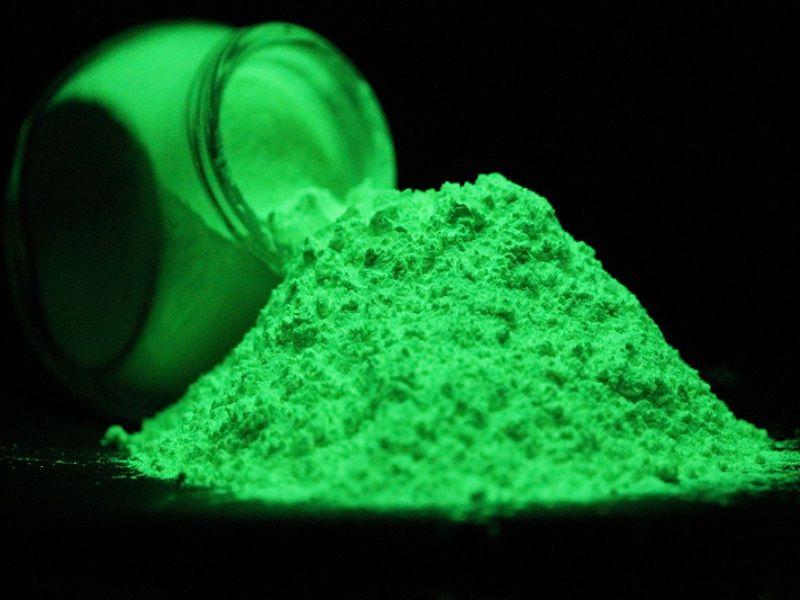Phosphorus Pentachloride: A Versatile Chemical Compound - Properties, Synthesis, Reactivity, Production, Safety Considerations

Phosphorus Pentachloride: A Versatile Chemical Compound
Phosphorus pentachloride, also known as PCl5, is an important inorganic compound that has widespread applications in organic chemistry. In this article, we will look at the properties, structure, uses and safety considerations of this versatile chemical.
Chemical Structure and Bonding
Phosphorus pentachloride has the chemical formula PCl5. Its molecular structure consists of a central phosphorus atom bonded to five chlorine atoms in a trigonal bipyramidal molecular geometry. The phosphorus atom is sp3d hybridized, with three equatorial Cl atoms and two axial Cl atoms. The P-Cl bonds are covalent and polar due to the difference in electronegativity between phosphorus and chlorine. The P-Cl bond distance is approximately 197 pm. Phosphorus pentachloride is a colorless crystalline solid at room temperature and pressure, but it readily sublimes to a vapor at 54°C.
Reactivity and Uses as a Chlorinating Agent
Due to the polarity of the P-Cl bonds, PCl5 is a very strong electrophile and readily reacts with nucleophiles. It acts as a chlorinating agent, supplying chlorine in organic transformations. It is commonly used to chlorinate alcohols, thiols, alkenes and aromatic compounds to form alkyl/aryl chlorides. This makes it useful for producing agrochemicals, pharmaceuticals and other industrial compounds. Some examples of reactions include the chlorination of methanol to methyl chloride, thiophenol to chlorothiophenol and ethylene to 1,2-dichloroethane.
It also has applications in chlorinating amines to form nitrogen mustards. These compounds were formerly used as chemical weapons but now find more benign uses as chemotherapy drugs. Due to its ability to transfer up to five chlorine atoms, PCl5 is valuable for polychlorination reactions. Some drugs and pesticides require multiple chlorine substitutions which can easily be achieved using this reagent.
Hydrolysis and Other Reactions
Besides acting as a chlorinating agent, PCl5 can also hydrolyze in the presence of water to form phosphorus acid and hydrochloric acid. This controlled hydrolysis is sometimes used synthetically to introduce P-OH or P-Cl groups in a molecule. PCl5 reacts with alcohols via an esterification reaction to form alkylchlorophosphate esters. It also adds to multiple bonds such as alkenes and alkynes via halogenation reactions. With amines, it forms ammonium chloride salts or N-chloramine derivatives depending on the reaction conditions.
Overall, due to these different reactivity patterns, phosphorus pentachloride serves as a versatile building block in organic synthesis. By carefully selecting the substrate and reaction conditions, it enables efficient access to a wide range of phosphorus, chlorine or nitrogen containing products. This multipurpose nature broadens its utility across many application areas.
Production and Purification
Industrially, phosphorus pentachloride is produced by the direct chlorination of white or red phosphorus. Chlorine gas is passed over finely divided white phosphorus at 400-450°C in a tube furnace according to the following reaction:
P4 + 10Cl2 → 4PCl5
Red phosphorus can also be used as the starting material. The resulting vapor is then condensed and collected. To obtain high purity PCl5, the crude product is usually purified by repeated fractional distillation under vacuum. Trace amounts of impurities like phosphorus oxychloride need to be eliminated for applications requiring anhydrous conditions. The purified PCl5 is a colorless liquid boiling at 108°C.
Proper safety precautions must be taken during production due to the reactivity of phosphorus and chlorine. Explosion-proof equipment is necessary to safely handle these chemicals on an industrial scale. Careful monitoring and maintenance of process conditions also helps maximize yields and minimize risks.
Safety and Handling
When handling phosphorus pentachloride, appropriate protective equipment including chemical resistant gloves, safety goggles and protective clothing should always be worn. As mentioned earlier, it is a strong chlorinating agent and will rapidly react with common constituents of living cells like lipids, proteins and nucleotides if exposed to biological tissues. Skin contact can cause severe burns, while eye contact or ingestion may result in permanent damage.
Work with PCl5 should be performed in a well-ventilated fume hood to prevent inhalation of toxic fumes produced from its hydrolysis. It hydrolyzes slowly in moist air to form phosphoryl chloride which is both corrosive and acts as an irritant. Spills should be promptly neutralized with limewater or sodium bicarbonate solution and the contaminated area washed thoroughly with water afterwards. Due to its reactive and corrosive nature, phosphorus pentachloride also needs careful handling and transportation according to safety regulations. Proper labeling and containerization help minimize hazards.
Phosphorus pentachloride is an important and widely applicable chlorinating agent in organic synthesis and industrial chemistry. Its versatility stems from the different reactivity patterns possible via its electrophilic phosphorus and chlorine substituents. Careful handling is necessary to avoid exposure to its toxic and corrosive nature. Looking ahead, further development of safer and more convenient protocols for PCl5 mediated transformations could provide greener routes for producing important agrochemicals, polymers and pharmaceuticals.
Get more insights on this topic :
- Phosphorus_Pentachloride:_A_Versatile_Chemical_Compound_-_Properties
- Reactivity
- Production
- Safety_Considerations
- Applications
- Phosphorus_Pentachloride:_A_Versatile_Chemical_Compound_Phosphorus_pentachloride
- also_known_as_PCl5
- is_an_important_inorganic_compound_that_has_widespread_applications_in_organic_chemistry._In_this_article
- we_will_look_at_the_properties
- structure
- uses_and_safety_considerations_of_this_versatile_chemical._Chemical_Structure_and_Bonding_Phosphorus_pentachloride_has_the_chemical_formula_PCl5._Its_molecular_structure_consists_of_a_central_phosphorus_atom_bonded_to_five_chlorine_atoms_in_a_trigonal_bipyramidal_molecular_geometry._The_phosphorus_atom_is_sp3d_hybridized
- with_three_equatorial_Cl_atoms_and_two_axial_Cl_atoms._The_P-Cl_bonds_are_covalent_and_polar_due_to_the_difference_in_electronegativity_between_phosphorus_and_chlorine._The_P-Cl_bond_distance_is_approximately_197_pm._Phosphorus_pentachloride_is_a_colorless_crystalline_solid_at_room_temperature_and_pressure
- but_it_readily_sublimes_to_a_vapor_at_54°C._Reactivity_and_Uses_as_a_Chlorinating_Agent_Due_to_the_polarity_of_the_P-Cl_bonds
- PCl5_is_a_very_strong_electrophile_and_readily_reacts_with_nucleophiles._It_acts_as_a_chlorinating_agent
- supplying_chlorine_in_organic_transformations._It_is_commonly_used_to_chlorinate_alcohols
- thiols
- alkenes_and_aromatic_compounds_to_form_alkyl/aryl_chlorides._This_makes_it_useful_for_producing_agrochemicals
- pharmaceuticals_and_other_industrial_compounds._Some_examples_of_reactions_include_the_chlorination_of_methanol_to_methyl_chloride
- thiophenol_to_chlorothiophenol_and_ethylene_to_1
- 2-dichloroethane._It_also_has_applications_in_chlorinating_amines_to_form_nitrogen_mustards._These_compounds_were_formerly_used_as_chemical_weapons_but_now_find_more_benign_uses_as_chemotherapy_drugs._Due_to_its_ability_to_transfer_up_to_five_chlorine_atoms
- PCl5_is_valuable_for_polychlorination_reactions._Some_drugs_and_pesticides_require_multiple_chlorine_substitutions_which_can_easily_be_achieved_using_this_reagent._Hydrolysis_and_Other_Reactions_Besides_acting_as_a_chlorinating_agent
- PCl5_can_also_hydrolyze_in_the_presence_of_water_to_form_phosphorus_acid_and_hydrochloric_acid._This_controlled_hydrolysis_is_sometimes_used_synthetically_to_introduce_P-OH_or_P-Cl_groups_in_a_molecule._PCl5_reacts_with_alcohols_via_an_esterification_reaction_to_form_alkylchlorophosphate_esters._It_also_adds_to_multiple_bonds_such_as_alkenes_and_alkynes_via_halogenation_reactions._With_amines
- it_forms_ammonium_chloride_salts_or_N-chloramine_derivatives_depending_on_the_reaction_conditions._Overall
- due_to_these_different_reactivity_patterns
- phosphorus_pentachloride_serves_as_a_versatile_building_block_in_organic_synthesis._By_carefully_selecting_the_substrate_and_reaction_conditions
- it_enables_efficient_access_to_a_wide_range_of_phosphorus
- chlorine_or_nitrogen_containing_products._This_multipurpose_nature_broadens_its_utility_across_many_application_areas._Production_and_Purification_Industrially
- phosphorus_pentachloride_is_produced_by_the_direct_chlorination_of_white_or_red_phosphorus._Chlorine_gas_is_passed_over_finely_divided_white_phosphorus_at_400-450°C_in_a_tube_furnace_according_to_the_following_reaction:_P4_+_10Cl2_→_4PCl5_Red_phosphorus_can_also_be_used_as_the_starting_material._The_resulting_vapor_is_then_condensed_and_collected._To_obtain_high_purity_PCl5
- the_crude_product_is_usually_purified_by_repeated_fractional_distillation_under_vacuum._Trace_amounts_of_impurities_like_phosphorus_oxychloride_need_to_be_eliminated_for_applications_requiring_anhydrous_conditions._The_purified_PCl5_is_a_colorless_liquid_boiling_at_108°C._Proper_safety_precautions_must_be_taken_during_production_due_to_the_reactivity_of_phosphorus_and_chlorine._Explosion-proof_equipment_is_necessary_to_safely_handle_these_chemicals_on_an_industrial_scale._Careful_monitoring_and_maintenance_of_process_conditions_also_helps_maximize_yields_and_minimize_risks._Safety_and_Handling_When_handling_phosphorus_pentachloride
- appropriate_protective_equipment_including_chemical_resistant_gloves
- safety_goggles_and_protective_clothing_should_always_be_worn._As_mentioned_earlier
- it_is_a_strong_chlorinating_agent_and_will_rapidly_react_with_common_constituents_of_living_cells_like_lipids
- proteins_and_nucleotides_if_exposed_to_biological_tissues._Skin_contact_can_cause_severe_burns
- while_eye_contact_or_ingestion_may_result_in_permanent_damage._Work_with_PCl5_should_be_performed_in_a_well-ventilated_fume_hood_to_prevent_inhalation_of_toxic_fumes_produced_from_its_hydrolysis._It_hydrolyzes_slowly_in_moist_air_to_form_phosphoryl_chloride_which_is_both_corrosive_and_acts_as_an_irritant._Spills_should_be_promptly_neutralized_with_limewater_or_sodium_bicarbonate_solution_and_the_contaminated_area_washed_thoroughly_with_water_afterwards._Due_to_its_reactive_and_corrosive_nature
- phosphorus_pentachloride_also_needs_careful_handling_and_transportation_according_to_safety_regulations._Proper_labeling_and_containerization_help_minimize_hazards._Phosphorus_pentachloride_is_an_important_and_widely_applicable_chlorinating_agent_in_organic_synthesis_and_industrial_chemistry._Its_versatility_stems_from_the_different_reactivity_patterns_possible_via_its_electrophilic_phosphorus_and_chlorine_substituents._Careful_handling_is_necessary_to_avoid_exposure_to_its_toxic_and_corrosive_nature._Looking_ahead
- further_development_of_safer_and_more_convenient_protocols_for_PCl5_mediated_transformations_could_provide_greener_routes_for_producing_important_agrochemicals
- polymers_and_pharmaceuticals._Get_more_insights_on_this_topic_: _https://www.dailyprbulletin.com/phosphorus-pentachloride-properties-applications-and-safety-considerations-in-organic-synthesis/
- Art
- Causes
- Crafts
- Dance
- Drinks
- Film
- Fitness
- Food
- Games
- Gardening
- Health
- Home
- Literature
- Music
- Networking
- Other
- Party
- Religion
- Shopping
- Sports
- Theater
- Wellness
- IT, Cloud, Software and Technology


